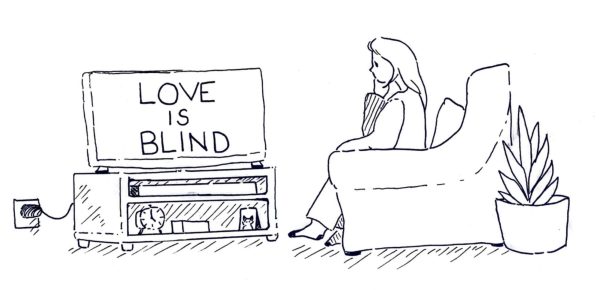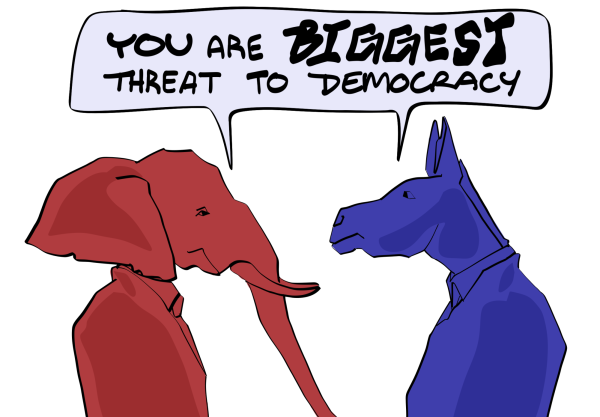Municipalization: California’s path to power
North state residents recently received some less-than-ideal news regarding their gas and electric utility services. Pacific Gas & Electric announced a broad plan to raise rates by an average of 4.6%.
PG&E vice president Robert Kenney explained the price hike vaguely.
“This increase is focused on work to keep our customers and communities safe,” Kenney wrote on Currents, PG&E’s external news website.
This decision comes on the heels of a highly contentious debate. Why should PG&E customers pay more to make up for the company’s incompetence and lax policies of equipment and infrastructure upkeep, especially when that inaction was found to be directly responsible for the costliest and deadliest wildfire in California history?
Obviously, California is not alone in putting up with the whims of private energy companies. Texans, for example, are currently dealing with such a crisis I don’t envy. The Lone Star State hosts five privately-owned power companies, all deregulated, compared to The Golden State’s regulated six.
The winter storm in mid-February left many Texans without power for days, and those who did have access to electricity and gas were stunned when their bills arrived.
The cost of Texas’ utilities rose to $9 per kilowatt hour, 75 times higher than normal for about a quarter of the state’s population, a result of opting for a variable-rate power plan as opposed to a fixed-rate plan. The increased expense was passed to the power companies’ customers.
This excess increase has been calculated to be $16 billion.
In addressing this ever-intensifying issue, one option is to keep paying these companies what they charge. Another is to further subsidize state and/or federal tax dollars to these companies in an attempt to offset increased customer charges. Either way, utility companies dictate their terms.
The better option is to take back utilities from private hands and charge the state with providing the services, called municipalization, the inverse of privatization. This is our only viable option out of this quagmire of corporate conspiracy.
How did companies come to prioritize profit over people to such a degree that citizens are put at such a disadvantage that they, in the increasingly most extreme cases, die?
After World War II, the industrial and corporate boom allowed publicly traded companies to re-strategize the purpose of “the company.”
Simply put, a post-WWII company was beholden to four factors:
· The shareholders. Shareholders invested in the company and should therefore be compensated accordingly.
· The employees. As a vital asset, employee needs were fully taken into account in the form of a living wage, safe working conditions, benefits, even company stock options.
· The customers. Customers’ needs include safety from defective products, accessibility to choose between competing brands and recompense from product failure.
· The public at large. Non-customers are affected by products, too. If General Electric neglects safety regulations and ships out an oven that’s prone to catch fire, the customer who purchased the oven isn’t the only one who suffers. Neighbors of that customer might find their own homes burned because of the defective oven, who would then be disinclined to consider a General Electric product in their house.
A recent example of this mindset is the infamous Volkswagen recall because of ignored emission standards and Boeing’s 747 debacle. It’s cheaper to pay fees than save lives.
As a result, we have the luxury of assessing both models from the present. The working class from the late 1940s through the late 1970s enjoyed a higher rate of home ownership, affordable higher education for their children and the security of retirement.
Conversely, the working class today must either work more than one job, more than 40 hours a week or refrain from starting or expanding a family without much hope for secure retirement.
Admittedly, the post-1980s model does one thing really well beyond driving a wedge into the working class: innovation.
Without concerns like public safety and worker satisfaction, companies are freer to outdo their competition. Products like smartphones and online delivery services have been developed as a result of a company providing the same service as their competition more cheaply, quickly, effectively or some combination thereof.
This model, however, does not conform to services like utilities, water, prison systems or educational institutions. Essentially, services people rely on to survive suffer in private hands. How can this be?
Instead of an innovative “race to the top,” exemplified by the shift from MySpace to Facebook or flip phones to smartphones, companies contracted to provide essential services display a monetarily-driven “race to the bottom,” as can be confirmed by comparing state versus private prison conditions, for example.
If Utility Company A convinces a state that it can administer gas and electric services cheaper than Utility Company B, Company A gets the contract. Since business models continuously strive to increase profit margins, corners are inevitably cut in the forms of public and employee safety and inferior service. Moreover, in private hands utilities are at the mercy of the market regardless of human need or environmental circumstance.
Developed and developing nations alike have made strides to municipalize their utility services with considerable success in terms of both safety and quality.
In the U.S., more than 2,000 public utilities currently provide power to roughly 45 million people in 50 states. This means that approximately 14% of Americans receive 10% of the total kilowatt-hours sold annually from municipalized utility entities, and the trend is growing.
The California tradition of utility privatization is hardly a recent phenomenon. A 1911 amendment to the Constitution of California decried that the Public Utilities Code was to be the highest law in the state, affirming unlimited authority over the state constitution regarding the regulation of public utilities. Nonetheless, it can be challenging to imagine a purely state-run utility entity or bureau, an affront to what we’ve come to expect from capitalism.
Competition is a healthy thing for product innovation, not essential services. In the north state, it’s a safe bet to assume that fire seasons will continue to lengthen and increase in severity. Can we really continue to trust a company that’s solely beholden to shareholders with our lives?
This “race to the bottom” mentality of utility corporations is undeniably unsustainable. We must take our power back.
Ian Hilton can be reached at [email protected].








